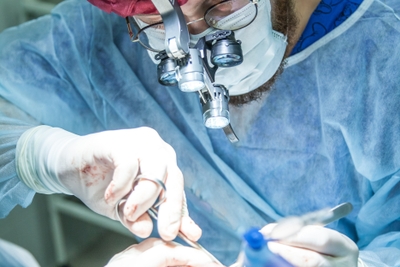How to Perfect those Surgeon Steady Hands

When the general public sees a surgeon, they perceive a genius with steady hands. The hands of a surgeon are just important as the throwing arm to a pitcher, the legs of a punter, or the eyes of a photographer. Those steady surgeon hands know how to perform their tasks with accuracy and skill.
But how does one develop the surehandedness of a surgeon, whose hands move like a maestro when amidst an orchestra? We preach it often here at Sim*Vivo…. PRACTICE! Two key areas of focus for professional level technique: become a master of psychomotor skills and extremely proficient in ambidexterity.
As Dr. Fortune says, “You don’t have to be completely ambidextrous to be a good surgeon but highly developed psychomotor skills in your non-dominant hand certainly helps.”
Psychomotor Skills:
Organizational Psychology Degrees explains the seven skills of the psychomotor domain as:
- Perception: Understanding non-verbal cues
- Readiness to act: Recognition of abilities and limitations
- Guided response: Ability to follow and act upon directions
- Basic proficiency: Creation of habitual movements executed with competence
- Complex overt response: Become an expert at the task
- Adaption: Capable to respond to unexpected situations
- Origination: Coming up with new patterns
Work through each of these stages in your surgical skills practice. The stronger you become in each, the more proficient you will become overall. Ever driven your car to work or school, arrived at your destination, and wonder how you got there? Or watched an accident happen right in front of you? You worked your way around it with smooth instinct. Once you’ve become highly proficient in your psychomotor skills, then it’s the time to work on ambidexterity.
Keep in mind, it is NEVER too late to learn. As with all things, you must learn the task at hand and then, PRACTICE!
Ambidexterity:
Most of us have a dominant and a non-dominant hand. In our everyday lives we tend to favor one side or the other, conversely, there are those who perform different tasks with different hands. In fact, about 1% of the US population is fully ambidextrous. Just as a point of reference, about 90% of the US population is right-handed while 10% is left-handed.
Mental Floss says these celebrities and historical figures are cross-dominant: Leonardo da Vinci, Pete Rose, Richard Feynmen, pitcher Greg A. Harris, Michelle Kwan, Shigeru Miyamoto, Paul McCartney, Benjamin Franklin, and Harry Truman.
Interesting! I bet they would have been fabulous surgeons.
I suppose we could potentially teach young children, whose brains are like sponges, to work both sides equally. But as a parent, most are concerned with general gross and fine motor skill development. By the time a child is old enough to benefit from the use of ambidexterity, they have developed strong habits and tendencies, but have not yet fully developed all seven stages of the psychomotor domain.
However, when it comes to surgery, you just don’t have the choice. You really need to be able to work both hands equally as well. Not only should both work well, but they also need to be steady. That steadiness improves with practice and progression of confidence in your technique.
If you were taught to play the piano, you would have learned to strike each key individually, played Chopsticks, chords, and eventually advanced to playing Mozart concertos, which required you to play complex melodies with each hand simultaneously but only after years of PRACTICE!
Think of becoming a skilled surgeon in the same manner. After much practice, you will have learned to coordinate the effort of both hands, both dominant and non-dominant. Your hands have learned to work in concert with one another – forceps in one hand and scissors or a scalpel in the other.
According to Reader's Digest, "Ambidexterity indicates that the left and right sides of that person's brain are pretty much symmetrical (which is true for lefties, too!) On the other hand, right-handed people tend to be left-brain dominant." Your brain truly is in control.
As you continue in your surgical training, keep on working on those steady hands, but remember you’re training your brain to work differently too. This all comes with time and PRACTICE!
How do you practice:
Sim*Vivo’s newest product release, Sim*Dissect, provides ample exercises to get you working with your non-dominant hand, progressing onto using both hands simultaneously while performing a very specific task. You’ll be teaching your hands to do two different actions at the same time all while using your brain to focus on two tasks simultaneously as well.
We encourage you to keep practicing and training, until and after you’ve become a maestro.
Good luck!
Photo by Olga Guryanova on Unsplash





